If your dog is giving you a hard time with bathroom breaks or poops, we’ve got you covered! From understanding why your pup may be hesitant to step outdoors to practical tips on how to encourage them, this listicle will provide you with the guidance you need to tackle this common issue head-on. Let’s explore various reasons why “my dog doesn’t want to go outside to pee“.
Stay tuned as we reveal expert advice and strategies to help your dog feel more comfortable going outside on a leash. Scroll down for reviews of our top picks in training aids that can assist in making outdoor bathroom trips a walk in the park!
Key Takeaways
- Address the Fear of Noise in pets: If your dog is hesitant to go outside due to loud noises, create a calm and quiet environment to encourage them to eliminate outside.
- Consider Medical Issues: Monitor your dog for any signs of discomfort or pain while urinating and consult a veterinarian to rule out any underlying health issues.
- Adapt to Weather Sensitivity: Provide appropriate protection from extreme weather conditions to make outdoor trips more comfortable for your dog.
- Understand Territory Marking: Recognize that your dog may be reluctant to pee outside if they feel their territory is threatened, and work on building their confidence.
- Manage an Aging Bladder: Accommodate your senior dog’s needs by offering more frequent bathroom breaks and understanding their reduced bladder control.
- Introduce Your Dog Gradually to New Environments: Help your dog acclimate to unfamiliar surroundings by slowly introducing them to new outdoor spaces to alleviate anxiety.
My Dog Doesn’t Want to Go Outside to Pee, But Why?
There could be several reasons why your dog doesn’t want to go outside to pee. One common reason is that the weather conditions are not favorable for your dog. If it’s too hot, too cold, raining, or windy, your dog may be hesitant to go outside. Another possibility is that your dog is feeling anxious or scared about something in the environment, such as loud noises, unfamiliar scents, or the presence of other animals.
It’s also essential to consider if your dog is experiencing any physical discomfort or health issues that may be making it difficult for them to go outside. If this behavior persists, it’s best to consult with a veterinarian to rule out any underlying medical reasons for your dog’s reluctance to go outside.
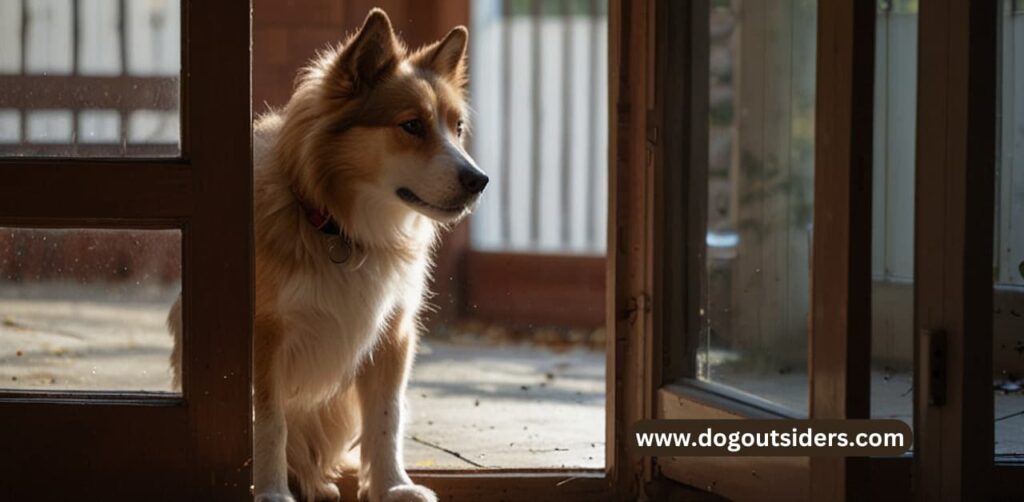
1. Fear of Noise
Many dogs exhibit a fear of noise, which can hinder their willingness to go outside to pee and poop. This common issue among dog owners can be addressed through patient and strategic methods.
- Desensitizing the dog to loud noises gradually is crucial.
- Positive reinforcement techniques can help create a positive association with outdoor sounds.
- Seeking professional help is recommended if the fear of noise persists.
Addressing this fear can significantly improve your dog’s quality of life and ensure they feel comfortable going outside when needed.
2. Medical Issues
If your dog is refusing to go outside to pee or poop, there might be underlying medical issues causing this behavior. It’s crucial to consult a veterinarian to rule out any potential health conditions that could be affecting your furry friend.
Monitoring your dog’s behavior for signs of discomfort or pain is essential in understanding the root cause of their reluctance to go outside. Pay attention to any changes in their usual routine or demeanor.
Following the vet’s recommendations for treatment and management is key to addressing any medical issues that may be hindering your dog from peeing outdoors. By adhering to the prescribed plan, you can help alleviate any health issues your pet may be experiencing.
In some cases, dogs may exhibit aversion to going outside due to conditions like urinary tract infections, bladder stones, or other medical conditions. If your dog is giving you a hard time with bathroom breaks or poops, we’ve got you covered!
Remember, seeking professional advice and guidance from a veterinarian is crucial in ensuring your dog’s well-being. By addressing any potential medical concerns promptly, you can help your furry companion get back on track with their potty routine.
3. Weather Sensitivity
Weather sensitivity in dogs can significantly impact their willingness to go outside to pee. Dogs, like humans, can be sensitive to extreme weather conditions such as cold weather and snow. It is essential to address this sensitivity to ensure your furry friend’s comfort and well-being.
- Provide appropriate outdoor gear like coats or boots in extreme weather conditions: Equipping your dog with suitable gear can make a significant difference in their willingness to venture outside in cold or snowy weather.
- Gradually acclimate the dog to different weather conditions: Slowly introducing your dog to various weather conditions can help them become more accustomed and comfortable when going outside.
- Create a comfortable outdoor potty area sheltered from harsh weather elements: Setting up a designated outdoor potty area that is sheltered from harsh winds, snow, or rain can encourage your dog to relieve themselves without being exposed to uncomfortable conditions.
4. Territory Marking
Territory marking is a common behavior in dogs that can be challenging to manage, especially when they refuse to go outside to pee.
Understanding Signs: Dogs often mark their territory by urinating on vertical surfaces like walls or furniture. This behavior is driven by the need to establish their presence and communicate with other animals.
Training Tips: Implement consistent training methods to discourage territorial marking indoors. Use positive reinforcement techniques to encourage appropriate elimination behaviors outdoors, such as providing treats or praise when they pee in the designated potty area.
Cleaning Routine: It’s crucial to clean indoor marking spots thoroughly to remove scent cues that may prompt your dog to mark the same spot again. Consider using enzymatic cleaners specifically designed to eliminate pet odors effectively.
5. Aging Bladder
As dogs age, their bladder may not be as reliable as it once was, leading to reluctance in going outside to pee. Establishing a consistent potty schedule tailored to the dog’s needs can help address this issue effectively.
Providing frequent potty breaks throughout the day is crucial in preventing accidents indoors. By offering the dog more opportunities to relieve themselves outside, you can minimize accidents and reinforce good potty habits.
Consulting a vet for advice on managing bladder control issues is essential. Vets can provide valuable insights into potential underlying health concerns that may be contributing to the problem. They can also recommend strategies and treatments to improve your dog’s bladder control.
Regular visits to the vet ensure that any medical conditions affecting your dog’s bladder are promptly addressed. Conditions such as urinary tract infections or bladder stones can impact your dog’s ability to hold their pee, making it uncomfortable for them to go outside.
6. New Environment
When transitioning your dog to a new environment, it’s crucial to introduce them gradually to prevent stress. Familiar scents or items from the old setting can provide comfort and aid in the adjustment process. Monitoring your dog closely during outside potty breaks in the new environment is essential for their well-being.
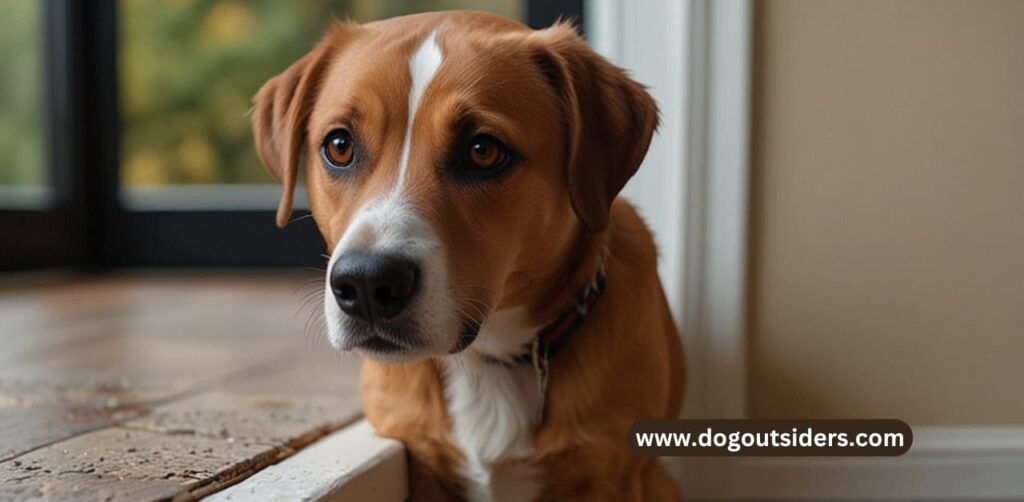
- Introduce the new environment gradually to reduce stress.
- Use familiar scents or items from the old setting for comfort.
- Monitor your dog closely during outside potty breaks in the new environment.
Dogs can be sensitive to changes in their surroundings, making it important to create a smooth transition when introducing them to a new location. By taking these steps, you can help your furry friend feel more at ease and confident in their outdoor bathroom routines.
7. Traumatic Experience
If your dog is giving you a hard time with bathroom breaks or poops, we’ve got you covered! If your dog is reluctant to go outside to pee, it might be due to a past accident or triggering event that has left them anxious or scared.
Repeated accidents in the same location can create a negative association for your dog, making them hesitant to return to that spot. Seeking professional guidance from a trainer experienced in handling traumatized dogs can provide valuable insights and techniques to help your furry friend overcome their fears.
Creating a safe and secure outdoor potty area outside can also play a crucial role in helping your dog feel more comfortable. If your dog is giving you a hard time with bathroom breaks or poops, we’ve got you covered!
Understanding that it takes time, patience, and positive reinforcement to help your dog overcome their fears is essential. By gradually reintroducing outdoor potty training in a calm and supportive manner, you can help rebuild your dog’s confidence and trust in the outdoor environment.
Every dog is unique, and what works for one may not work for another. Tailoring your approach based on your dog’s specific needs. Behaviors are key to successfully addressing their reluctance to go outside to pee.
8. Schedule Changes
Adjusting the potty schedule can be a game-changer when it comes to encouraging your dog to go outside to pee. By gradually altering the times for bathroom breaks, you can align them with your new daily routine or work schedule. This approach helps in establishing a consistent pattern for your furry friend.
Positive reinforcement plays a crucial role in reinforcing the desired behavior of going outside for potty breaks. Rewarding your dog with treats. Praise, or playtime every time they successfully eliminate outdoors creates a positive association with the act.
Consistency is key in maintaining the new potty break routine. Dogs thrive on predictability and structure, so sticking to the adjusted schedule prevents confusion and reinforces the habit of going outside to pee.
9. Attention Seeking
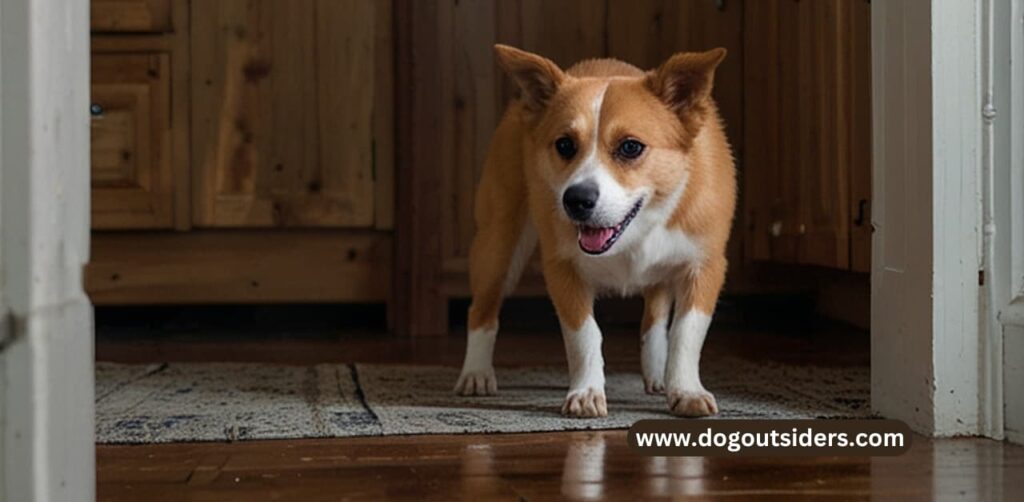
When dealing with attention-seeking behaviors in dogs, it’s essential to provide mental and physical stimulation to fulfill their needs. Set aside dedicated time for play and exercise sessions to keep your furry friend engaged and satisfied.
If your dog is giving you a hard time with bathroom breaks or poops, we’ve got you covered! By not reinforcing the behavior associated with avoiding going outside, you can encourage your dog to understand that going outdoors is necessary.
Dogs often seek attention through various actions, including resisting going outside for bathroom breaks. By ensuring that your pet receives enough mental and physical activity throughout the day, you can help reduce attention-seeking behaviors that may interfere with their potty routine.
Remember, consistency is key when addressing attention-seeking behaviors in dogs. By establishing a routine that includes regular playtime, exercise, outdoor breaks, and time outside, you can help your furry companion feel fulfilled and less likely to engage in unwanted behaviors.
10. Behavioral Problems
Addressing behavioral problems in dogs that resist going outside to pee requires a deeper understanding of the underlying causes. It’s essential to identify any triggers or anxieties outside that may be hindering your dog’s outdoor potty training progress.
One key approach is to implement behavior modification techniques suggested by professional trainers. These experts can provide tailored strategies to help modify your dog’s behavior positively and effectively.
Consistency plays a crucial role in overcoming behavioral issues related to outdoor potty training. By maintaining a consistent routine and approach, you can help your dog understand what is expected of them when it comes to bathroom breaks outside.
Patience is another vital aspect to consider when dealing with behavioral problems in dogs. Rome wasn’t built in a day, and changing ingrained behaviors takes time. Stay patient and persistent in your efforts to encourage positive behavior from your furry friend.
Utilizing positive reinforcement techniques can significantly impact your dog’s behavior. Rewarding good behavior with treats, praise, or playtime can reinforce the desired actions and motivate your dog to continue exhibiting positive behaviors.
Conclusion:
After exploring various reasons why my dog doesn’t want to go outside to pee, it’s clear that factors like fear of noise, medical issues, weather sensitivity, territory marking and aging bladder. Further new environment, traumatic experiences, schedule changes, attention-seeking behaviors, and behavioral problems can all play a role. As a dog owner, understanding these potential causes can help address the issue effectively and ensure your furry friend stays healthy and happy. Whether it’s creating a safe outdoor space, consulting with a vet, establishing a consistent routine, or providing positive reinforcement, taking proactive steps based on these insights can lead to positive changes in your dog’s behavior.
FAQ’s:
Dogs can be sensitive to loud noises like thunderstorms or construction sounds, causing fear and anxiety. Try desensitization techniques, create a safe space, or consult a professional trainer for help.
Look for signs like excessive thirst, changes in appetite, lethargy, or accidents indoors. Schedule a vet visit for a thorough examination to rule out any underlying health problems causing your dog’s behavior.
Consider using protective gear like a raincoat or booties, creating a sheltered potty area, or training your dog to associate outdoor peeing with positive experiences. Gradual exposure and positive reinforcement can help ease their discomfort.
Consult your veterinarian for guidance on managing age-related conditions such as arthritis or urinary incontinence. Adjusting feeding schedules, providing easy access to the outdoors, and using absorbent pads indoors can help accommodate your senior dog’s needs.

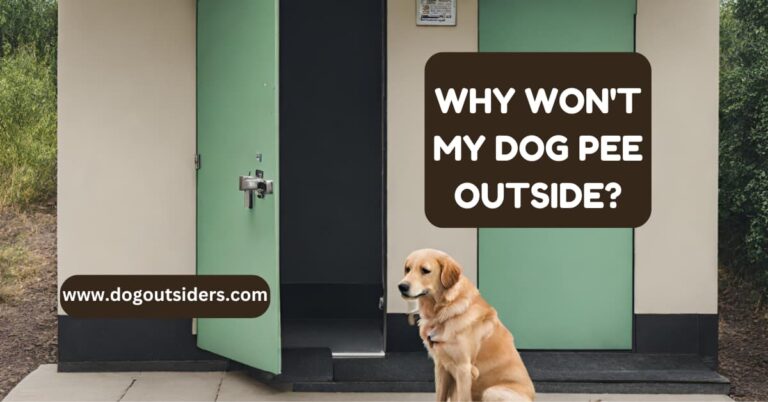
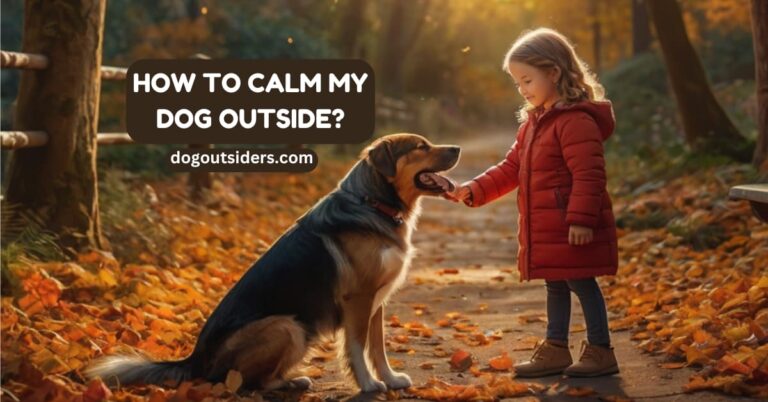

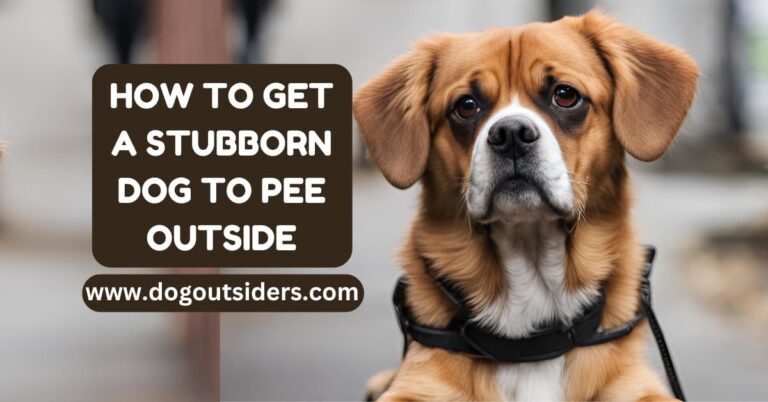

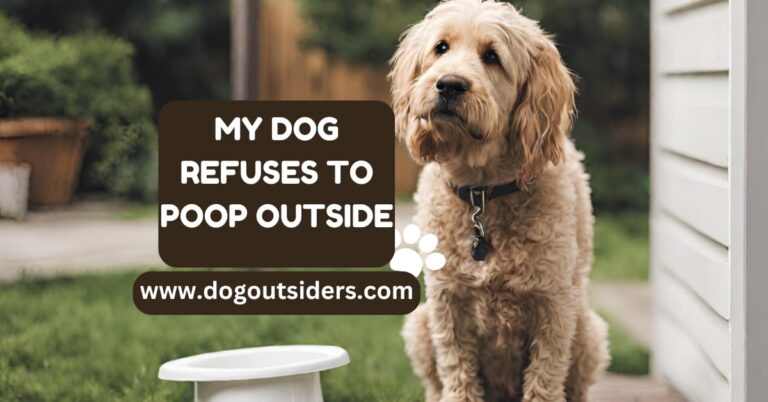
One Comment